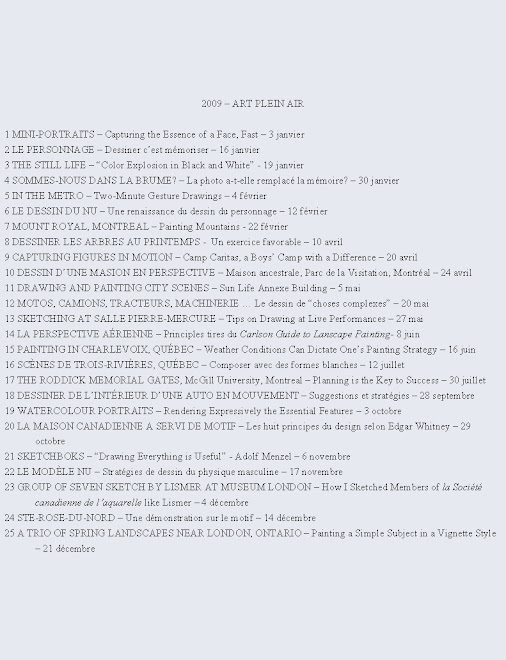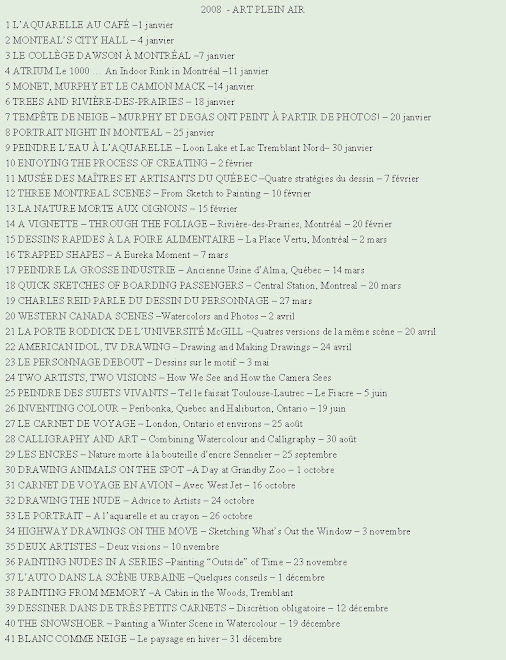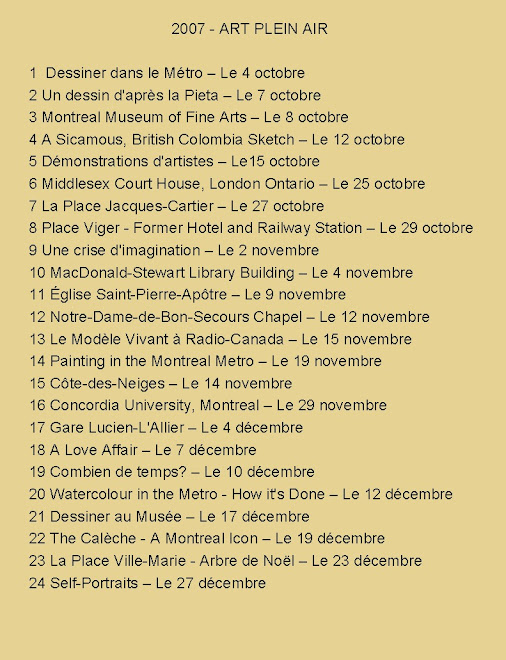 Feeling agreeable memories from sketches
Feeling agreeable memories from sketchesI love to draw and paint outdoors so much that at this time of year when we are snowed under I flip through my sketches of summer scenes and immediately feel better.
“The Secret”, the popular book by Rhonda Byrne, says: “Secret triggers, such as agreeable memories, nature or your favourite music, can modify your feelings or change in an instant the frequency you are in presently.” I leaf through my sketch books and remember sounds and smells and who I was with. These are examples of positive feelings I had while drawing the scene and now relive.

For example, last summer while drawing beside City Hall I met a friend I had not seen for many years. It brought back fond memories. Working outdoors opens up the opportunity for such positive chance encounters.

I have posted three sketches painted last summer. They were all sketched with a Micron 03 archival ink pen in a hard bound 6”x 9” sketchbook. Colour was added using Sennelier pan pigments.
Why sketches are often better than final paintings
My intention is to paint larger works in studio from the three illustrated colour studies. Jeanne Dobie in: Making Color Sing says: “Have you ever wondered why sketches are often better than final paintings? When we sketch, usually in limited time, we unconsciously seize the large, major components, which are the basis of a stronger, more forceful composition. Later, when the final painting is executed in the studio, the tendency is to lose the original essence by adding all the extras and breaking up the solid shapes into disjointed smaller areas.”
What one can do before converting the sketch to a final painting
Sketch 1- Trace the large shapes: I placed tracing paper over the sketch and traced the large major components. This helped me to see more clearly the larger shapes.

Sketch 2 - Scan in grayscale: Using a computer scan or a digital camera set to grayscale I eliminated the colour. This permitted me to see if the composition worked in terms of values only. You can achieve a similar effect by placing a red filter over your painting.

Sketch 3 – Isolate the white shapes: Again, placing tracing paper over the colour sketch I traced around the unpainted white shapes to see more clearly their impact. I could also use acetate or work through a computer image. Jeanne Dobie says: “For a strong painting, I concentrate on making my unpainted shapes as powerful as my painted shapes.”

“The student who really learns to draw will be the one who draws.” Kimon Nicolaïdes in The Natural Way to Draw.
For “happy paintings” sketch, paint and think positive!
Raynald Murphy sca









Aucun commentaire:
Enregistrer un commentaire